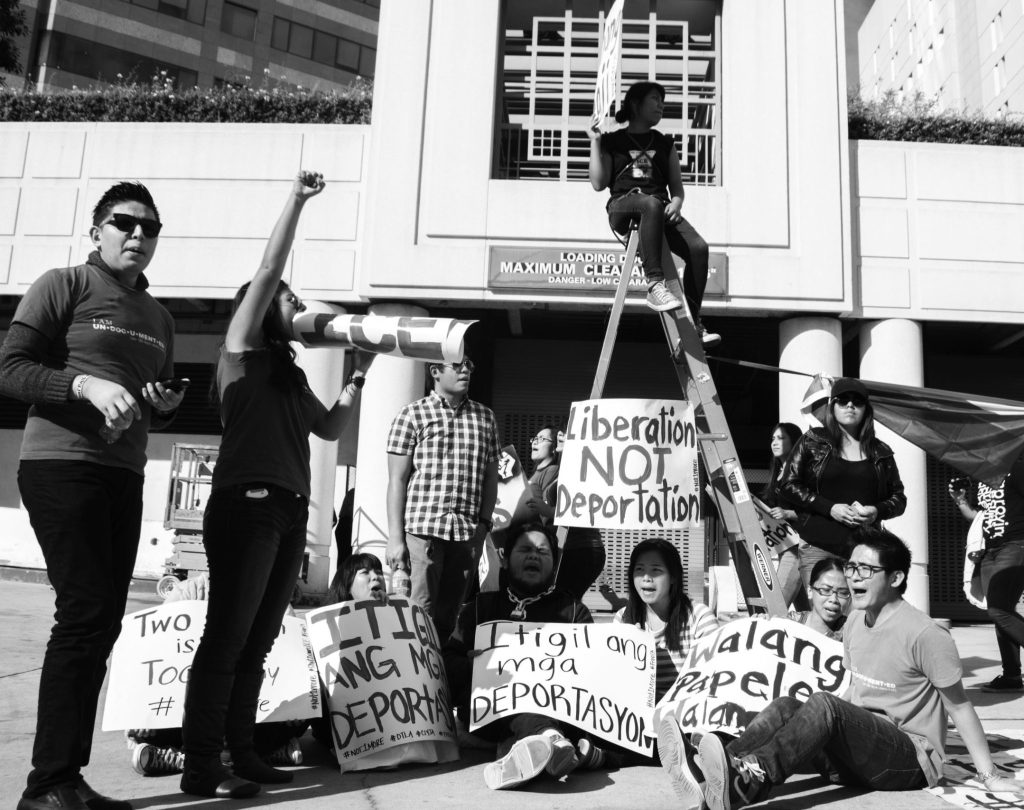Automation and the Future of Dockwork at the San Pedro Bay Port Complex
By: Brian Justie, Tia Koonse, Monica Macias, John Schmidt, Kent Wong
Over the last 60 years, the Ports of Los Angeles and Long Beach, collectively known as the San Pedro Bay Port Complex, have grown in scale and significance to become the 10th busiest port complex in the world, responsible for more than 30% of domestic containerized imports. Yet new technology remains a hotly contested topic at the bargaining table.
Automated cargo-handling equipment—nothing short of a paradigm shift from its mechanized predecessor—was first introduced at the Port of Los Angeles in 2014. Today, three of the San Pedro Bay Port Complex’s 12 terminals employ some degree of automation, with additional terminal operators currently considering similar investment in automated infrastructure. The longshoring workforce and surrounding community share concerns about automation’s potential to erode job quality and threaten career prospects.
Automation and the Future of Dockwork at the San Pedro Bay Port Complex is a mixed-methods study of the potential impacts of increased automation at the San Pedro Bay Port Complex, commissioned by the California Workforce Development Board as part of the California Legislature’s 2020 Assembly Bill 639. A panel of 10 industry stakeholders drove this research, composed of two legislative appointees with backgrounds in workforce development, as well as representatives of the International Longshore and Warehouse Union (ILWU), the Pacific Maritime Association (PMA), and the Los Angeles and Long Beach Port Authorities. This panel convened six times over 18 months, and individual panelists participated in a series of in-depth interviews.
Among other findings, the report notes:
- Industry stakeholders generally agreed on issues facing the San Pedro Bay Port Complex. Increased competition for discretionary cargo, insufficient government investment, inefficiencies across other segments of the supply chain, and stringent local regulations have presented significant challenges over the past decade. In particular, the recently proposed “indirect source rule” that aims to introduce heightened emissions standards will put newfound pressures on terminal operators and the port workforce, further threatening competitiveness and sustainability.
- Industry stakeholders championed a wide range of possible solutions other than automation, including increasing hours of operation, investing in inland ports, better worker-training programs, and optimizing existing infrastructure to achieve standardization across terminals. There was considerable enthusiasm for shifting a greater share of containerized cargo to on-dock rail systems, which could serve as an immediate means of both alleviating congestion and increasing cargo velocity. The planned Goods Movement Training Campus offers opportunities to update and improve worker training across the sector. Unlike automation, these solutions offer a systematic approach to maximizing port productivity and mitigating job loss.
- Industry stakeholders questioned the immediate benefits of increased automation. Terminal operators and labor representatives alike expressed significant doubts about automation’s presumed efficiencies. Neither their experience nor the relevant literature unequivocally demonstrates that automation is more productive, safer, or cheaper than conventional cargo-handling equipment. Globally, there remains little evidence of positive return on investment at terminals that have implemented large-scale automated infrastructure.
- Industry stakeholders identified a number of potentially negative impacts of automation. There was broad consensus that automation could pose immediate safety risks for workers, lead to increased workplace surveillance and control, and produce indirect, unforeseen ripple effects across other segments of the supply chain.
- Industry stakeholders feared that increased automation would adversely affect the harbor community. Increased automation may undermine one of the key engines for economic stability and upward mobility in the harbor community, effectively extracting its wealth and exporting it in the form of profits for international shipping conglomerates. Given the unique pride fostered by the local longshoring industry—often shared across generations— the prospect of job loss driven by automation has existential stakes for the community.
Authors recommend:
- Advocating for better alignment between local and federal regulatory frameworks.
- Establishing systems of feedback and evaluation driven by worker input to assess the impact of terminal automation.
- Increasing transparency around operational data to ensure accountability and collaboration between port stakeholders, policymakers, and researchers.
- Prioritizing community input to ensure that development of the Goods Movement Training Campus is aligned with community needs.
- Expanding opportunities for collaboration between labor, management, and the port authorities.
- Commissioning further research into key topics identified by industry stakeholders.
Recent Coverage

